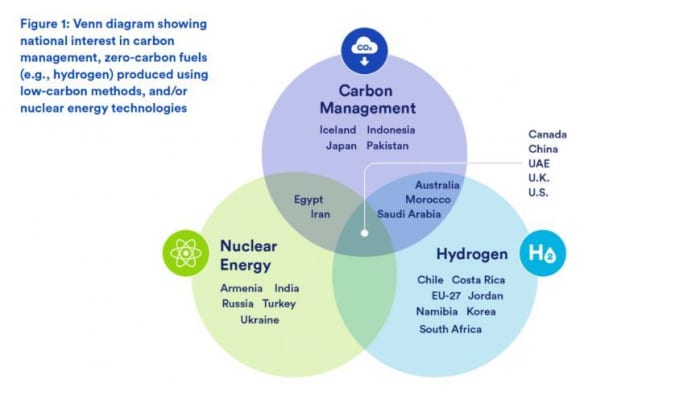This post was originally published on this site
Most wealthy and developing nations that agree to cut emissions intend to use technologies like carbon capture, hydrogen, ammonia and nuclear energy to meet their climate goals, a new report out Thursday shows.
It’s an approach that the U.N. and other major climate-change groups have embraced in step with more aggressive inclusion of wind and solar, but an approach that staunch environmental advocacy groups worry only encourages more oil
CL00,
and gas
NG00,
drilling.
The Clean Air Task Force (CATF), which collected and analyzed the findings, said the scope of these plans underscore the importance of increasing funding and advancing research, government support and international collaboration to commercialize these technologies quickly.
Environmental groups typically challenge what they see as approaches that will keep polluting fossil fuels in the energy mix. CATF says based on predictions for stronger energy demand as the world becomes more developed, these technologies will be vital to meet broad goals to limit economic shocks and slow global warming.
Both the U.N.’s Intergovernmental Panel on Climate Change (IPCC), the widely followed body alerting the globe on the dangers of a warming Earth, and the International Energy Agency, a watchdog for the fossil-fuel industry, have said carbon capture and other technologies that support traditional energy for now must factor into plans. The IEA, which is typically industry-friendly, surprised global markets last year with its call for a stop to new oil and gas investment in the relatively near future.
Warming limitation goals were set in 2015 in Paris and remain the major driver of global actions. The Paris pact’s goal is to limit global warming to well below 2 degrees, preferably to 1.5 degrees Celsius, compared to pre-industrial levels.
The U.S. and many developed nations have said they will aim to halve total emissions from all sectors by 2030 and reach net-zero emissions by 2050.
Canada, China, UAE, the U.K. and the U.S. all plan to use carbon capture, nuclear and hydrogen as part of their climate plans.
Stacey Davis, director of climate, technology and innovation policy at CATF, said the group exploring the findings was pleased to see as much interest in developing nations as the wealthier nations that are responsible for the bulk of polluting.
The report shows a “significant appetite for advanced climate solutions, and should serve as a demand signal for funding decarbonization efforts around
the world,” she said.
Carbon capture, which grabs emissions at the point of combustion and stores them underground, sometimes recycling them for new energy, as well as green hydrogen, which could eventually replace traditional fuels, advance all the time and draw investment. They are not yet commercially viable for wide use.
The oil and gas industry itself is increasingly investing in carbon capture. Chevron Corp.
CVX,
for one, is partnering with Microsoft
MSFT,
oilfield services firm Schlumberger New Energy
SLB,
and privately held Clean Energy Systems to build a carbon capture plant in California.
Nuclear energy, meanwhile, remains a bipartisan talking point in the U.S., including updating the fission-based plants that have been underfunded. President Biden has expressed suport for nuclear.
New exploration also focuses on advancing the so far elusive at scale nuclear fusion technology, which by some estimates is about a decade away from broader use. The White House earlier this year held a summit on nuclear fusion.

CATF
Davis told MarketWatch that some countries she reviewed are already advancing feasibility studies, or putting these technologies into their modeling of net-zero emission scenarios.
“I’m hoping that the private sector will use this report as a way to signal where they could be developing these [carbon capture and other] technologies based on national interest, to innovate and to diffuse this technology globally in order to meet net-zero goals.”
Elon Musk and other wealthy executives or philanthropic leaders have created incentives for carbon capture development.



